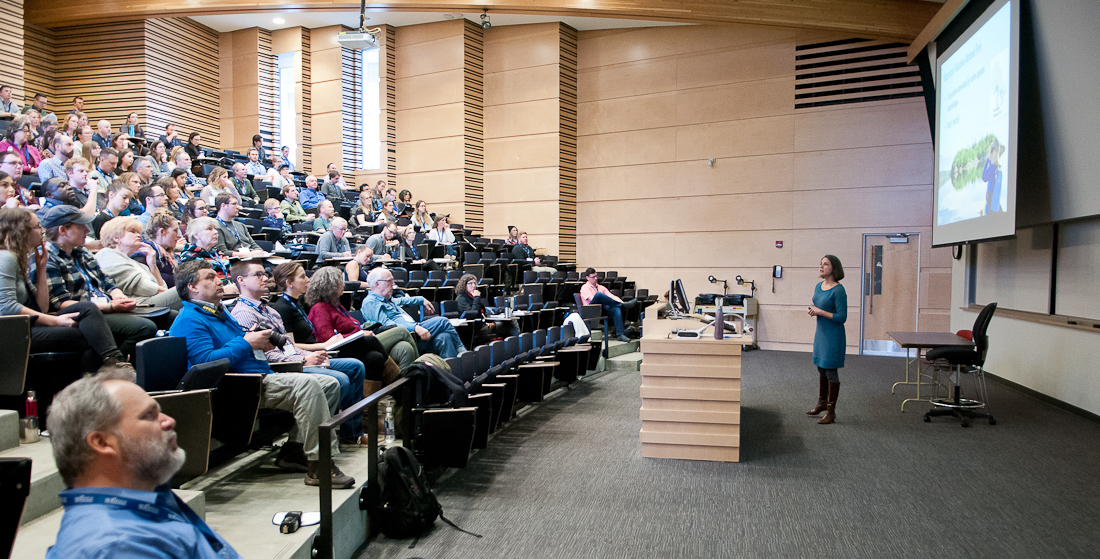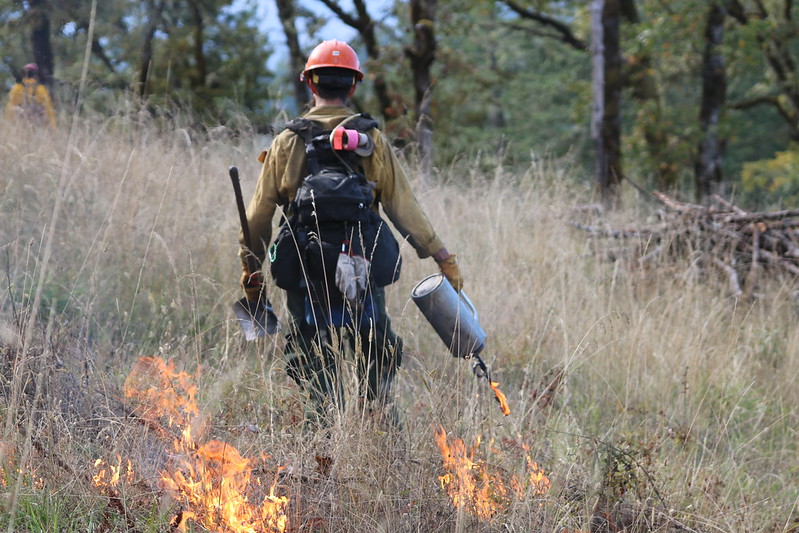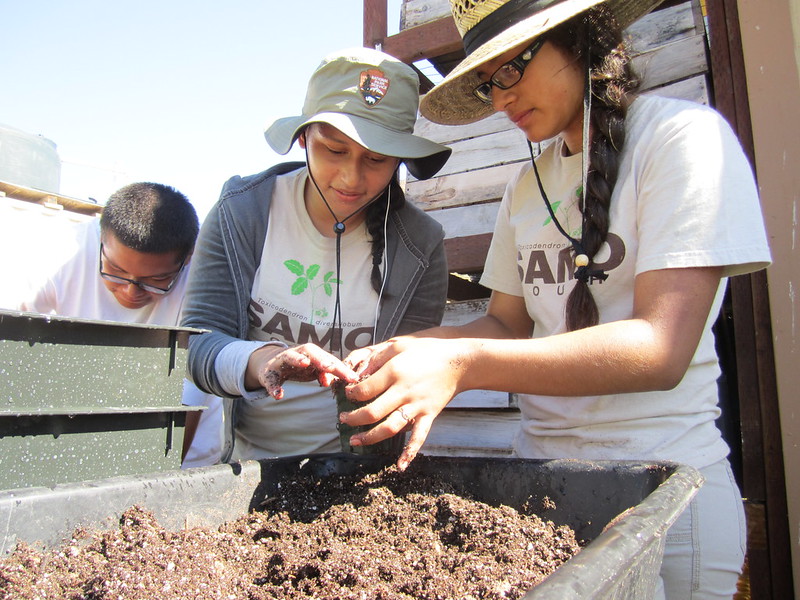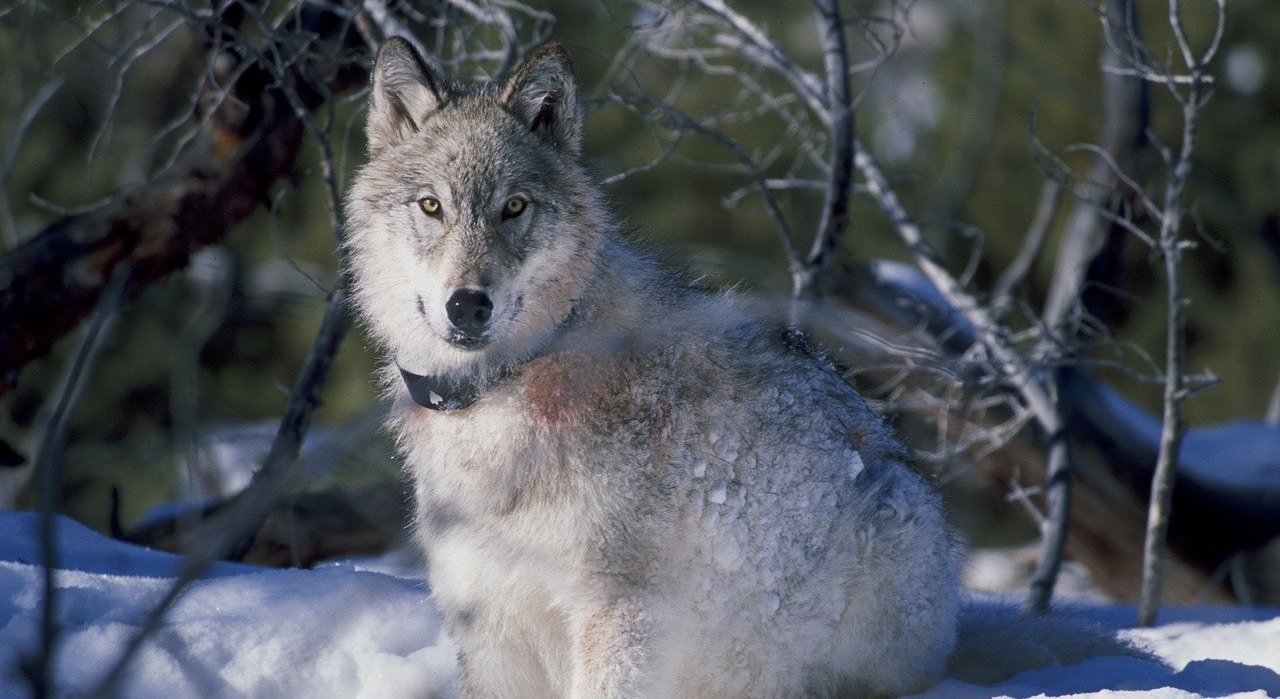Careers in restoration and rewilding
Conservation is about protecting the diversity of life on Earth – or ‘biodiversity’. But is protection enough?
At Conservation Careers we believe that conservation should go beyond protection, to restoring and enhancing diversity.
This form of ‘progressive conservation’ focusses on how to help ecosystems and landscapes recover after they’ve been degraded, damaged or destroyed. It also includes returning human-managed areas to the wild.
Find out how to get wild within restoration and rewilding careers!
Table of Contents
What is restoration?
Ecological restoration, or environmental restoration, is “the process of assisting the recovery of an ecosystem that has been degraded, damaged, or destroyed.”
Ecosystems – systems of plants, animals and microorganisms that interact with their environment – can be negatively impacted by human activity.
These negative impacts can be due to damage, degradation or destruction, which are explained by the Society for Ecological Restoration. Damage is the least severe, while destruction is the most severe:
Damage: “an acute and obvious harmful impact upon an ecosystem such as selective logging, road building, poaching, or invasions of non-native species.”
Degradation: “chronic human impacts resulting in the loss of biodiversity and the disruption of an ecosystem’s structure, composition, and functionality. Examples include: long-term grazing impacts, long-term over fishing or hunting pressure, and persistent invasions by non-native species.”
Destruction: “degradation or damage removes all macroscopic [visible] life and commonly ruins the physical environmental. Ecosystems are destroyed by such activities as land clearing, urbanization, coastal erosion, and mining.”
Restoration aims to start or speed up an ecosystem’s recovery following human impact. Within restoration there are two main strategies:

Active restoration: In active restoration, people use management techniques to help an ecosystem recover. For example, in that same area of tropical forest, conservationists plant seedlings to aid regeneration.
Other restoration activities might include removing invasive species, reintroducing wildlife species, or altering landforms. They might even involve restoring a previous function, such as fire, flooding or grazing.
Rather than restoring an ecosystem to a previous state, restoration aims to return an ecosystem to its historic trajectory. This recognises that new influences, such as climate change, might alter its trajectory.
What is rewilding?

Rewilding aims to restore ecosystems that were previously under human management, using natural processes and/or wildlife to shape wild spaces and landscapes.
Rewilding focusses on “letting nature take care of itself“ or “letting nature lead“, and usually takes place at a large scale (large enough for natural processes to lead). It also emphasises the benefits of nature for people, including local communities, and reconnecting people with nature.
Rewilding is an evolving concept that is gaining interest within the conservation sector. Visit IUCN, Rewilding Britain and Rewilding Europe for sample definitions of rewilding.
Where do restoration and rewilding professionals work?

Whether you enjoy working in the field, in an office, in a lab, or even traveling to more remote field sites, you can find an environment you thrive in with a restoration and rewilding career.
Understanding the main employer types can help you navigate careers in restoration and rewilding. They are:
- Academia – Help create the research base that practitioners need to effectively restore and rewild ecosystems. Employers are typically universities and colleges, such as Florida State University, University of Cambridge and UNSW Sydney.
- Charity – Contribute to not-for-profit and non-governmental conservation activities with the Charity, NGO or ‘Third Sector.’ Examples include Freshwater Habitats Trust, Osa Conservation, The Nature Conservancy, re:wild, Rewilding Britain, Rewilding Europe, Trees for Life, Wildlife Preservation Canada and WWF.
- Business – Work with for-profit private companies or consulting firms that deliver restoration projects, such as Haycock and Jay Associates, Ocean Associates Inc., Tetra Tech, Wildland Consultants and Wildscapes.
- Government – Help set regional, national or international policies, and enforce best practice with the public sector or civil service. Examples of government institutions and agencies include Natural Resources Wales, North Somerset Council (UK) and Washington Department of Fish & Wildlife (USA).
- Enterprise – Join the start-up, social enterprise or innovation movement, applying commercial strategies to maximise improvements in environmental and human well-being.
Want to discover more great restoration and rewilding employers? As a Conservation Careers Academy member, check out our Career Explorer database with over 40,000 jobs from around the world
What is a typical restoration or rewilding job description?

Restoration and rewilding are broad themes of work, encompassing each of the 15 key conservation job types. There’s something here for every conservationist with a wild spirit!
15 key restoration and rewilding job types
Restoration and rewilding professionals can apply their skills across many of the 15 key conservation job types, including:
- Animal Welfare Restoration & Rewilding Jobs | Caring for animals
.
Examples of early career job titles: Assistant Keeper, Captive Breeding Assistant, Veterinarian, Species-at-risk Technician.
Examples of employers: working for a zoo/aquarium, charity or government department that carries out reintroduction projects. E.g. Wildlife Preservation Canada. - Communications & Marketing Restoration & Rewilding Jobs | Raising the profile of conservation
Examples of early career job titles: Communications Officer/Specialist, Marketing Officer, Social Media Assistant, Editor, Writer, Blogger.
Examples of employers: Almost every organisation active in restoration or rewilding needs support with this! - Community-based Conservation Rewilding & Restoration Jobs | Helping people to be part of the solution
Examples of early career job titles: Community Outreach/Engagement Officer, Local Empowerment Officer, Community Ranger.
Examples of employers: Freshwater Habitats Trust, Knowsley Safari Foundation. - Countryside Management, Warden & Ranger Restoration & Rewilding Jobs | Saving key sites for nature
Examples of early career job titles: Assistant Warden, Assistant Ranger, Countryside Ranger, Park Ranger, Estate Worker, Reserves Officer, Community Ranger.
Examples of employers: State of Florida, New Zealand Department of Conservation, The Wildlife Trusts, Groundwork. - Ecotourism Restoration & Rewilding Jobs | Helping people experience the natural world
Examples of early career job titles: Conservation and Research Assistant.
Examples of employers: Tengah Island Conservation. - Ecological Consultancy Restoration & Rewilding Jobs | Ensuring ecologically-sensitive development
Examples of early career job titles: Ecologist, Assistant Ecologist, Graduate Ecologist, Restoration Ecologist.
Examples of employers: Devon Wildlife Trust, Tetra Tech. - Environmental Economics & Ecosystem Assessment Restoration & Rewilding Jobs | Putting a value on nature
Examples of early career job titles: Rewilding Economic Analyst; Carbon Finance Specialist; Green Finance Specialist; Technical Specialist, Biodiversity & Nature-Based Solutions, Sustainable Finance Assistant.
Examples of employers: BirdLife International, Devon Wildlife Trust, Fauna & Flora International, Osa Conservation, Wetlands International. - Environmental Education Restoration & Rewilding Jobs | Increasing awareness and support for nature
Examples of early career job titles: Learning Officer, Education Officer, Environmental Educator, Learning Assistant, Education Assistant, Environmental Education Program Assistant, Training and Skills Officer.
Examples of employers: Billion Oyster Project, Chesapeake Bay Foundation, Ducks Unlimited, KIDS for the BAY, Cumbria Wildlife Trust. Fundraising & Development Restoration & Rewilding Jobs | Raising money to save nature
Examples of early career job titles: Membership Development Officer, Fundraising Officer, Membership Development Assistant, Development Officer.
Examples of employers: Rewilding Europe, RSPB, The Charles Darwin Foundation, The Coral Reef Alliance.- Mapping & GIS Restoration & Rewilding Jobs | Putting nature on the map
Examples of early career job titles: GIS Technical Support Officer, GIS Spatial Modeller, GIS Spatial Modeller, GIS / Ecology Graduate, GIS Technical Support Officer, GIS Officer, GIS Specialist, GIS Data Analyst.
Examples of employers: Bristol Avon Rivers Trust, New Mexico Forest and Watershed Restoration Institute, The Biodiversity Consultancy, Xerces Society. - Marine Restoration & Rewilding Jobs | Protecting the blue planet.
Examples of early career job titles: Varies! Marine conservation includes all job types, so job titles can vary widely.
Examples of employers: Gili Shark Conservation, Marine Conservation Cambodia, Oceana, RSPB, Scottish Seabird Centre. - Photography and Film-making Restoration & Rewilding Jobs | Storytelling for change
Examples of early career job titles: Freelance Photographers, Photo-journalists, Film-makers, Editors, Producers.
Examples of employers: Island Conservation, WWF, Yorkshire Wildlife Trust. - Policy & Advocacy Restoration & Rewilding Jobs | Saving wildlife through law
Examples of early career job titles: Policy and Advocacy Officer, Policy Advisor, Campaigns and Policy Assistant.
Examples of employers: Action for Conservation, Oceana, Wetlands International, WildEarth Guardians. - Programme & Project Management Restoration & Rewilding Jobs | Saving the world one project at a time
Examples of early career job titles: Project Officer, Junior Project Officer, Project Assistant, Programme Officer and Programme Assistant, Project Manager, Programme Manager.
Examples of employers: Bristol Avon Rivers Trust, Devon Wildlife Trust, River Partners. - Science & Research Restoration & Rewilding Jobs | Answering the key questions to tackle biodiversity loss
Examples of early career job titles: Field Assistant, Research Assistant, Science Officer.
Examples of employers:Florida Fish and Wildlife Conservation Commission, The Coral Reef Alliance, The Partnership for the Delaware Estuary.
Example restoration and rewilding jobs
Field research and monitoring
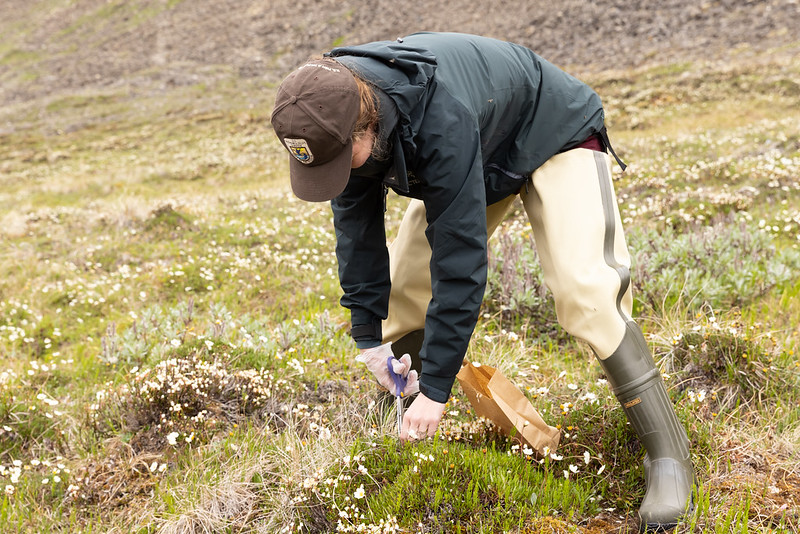
- Identifying plant or animal species.
- Collecting field data (plant, animal or nonliving aspects).
- Conducting vegetation surveys, habitat assessments or monitoring.
- Carrying out inventories for threatened, rare and special-status species.
- Mapping in the field (e.g. wetland delineations).
- Monitoring populations.
- Inputting, analysing and/or summarising field data.
- Writing reports.
- Coordinating with landowners.
- Planning field research and logistics.
- Leading field teams.
Countryside management

- Habitat stewardship.
- Planting native trees, shrubs and/or grasses.
- Controlling invasive species.
- Installing and maintaining ‘infrastructure’ to aid restoration, such as fencing, etc.
- Documenting restoration activities.
Project and programme management
Project and programme management roles help plan, implement, monitor and evaluate restoration or rewilding projects and programmes. Duties you might find yourself doing are diverse and include:
Developing or coordinating projects (research or land management).
- Conducting desktop research and analyses.
- Identifying funding opportunities and developing proposals.
- Engaging and building relationships with stakeholders and partners, such as community groups, government agencies and NGOs.
- Supporting or managing project administration and budgets.
- Working with, supporting or supervising staff, partners, external contractors or volunteers to deliver project actions.
- Delivering community engagement, education or events (e.g. river cleans, native species planting).
- Organising or delivering presentations or training workshops.
- Representing your organisation at meetings and events.
- Sharing and disseminating best practices.
- Supporting policy and advocacy work (e.g. via analyses, guidance).
- Conducting project reviews.
- Producing project documentation such as donor reports.
- Developing and/or delivering communication activities (e.g. media liaison, written materials).

Want to understand what a day in the life of a restoration or rewilding conservationist is really like? Read the latest Restoration Career Stories & Advice, or check out these interviews and podcast episodes:
- Podcast | Restoring life on Earth | Andrew Cottam
- Podcast: Professor David Hill CBE | The Environment Bank
- Interview | Restoring reefs from little pieces
- “Rewilding people” with Citizen Zoo | An interview with Elliot Newton
- Our Cities Wild Islands: Setting up a rewilding project in the United Kingdom
- A mammoth task: restoring an Ice-Age ecosystem to save the planet
Image (top): A river restoration project in progress. Credit: South Florida Water Management District / Flickr
How much money can I make in restoration or rewilding?

Restoration and rewilding salaries can vary widely depending on 1) conservation job type, 2) employer type, 3) region and 4) level.
Typically, the highest paying sector is the business sector, while the lowest paying sector is the charity sector. A common higher-paying job type is ecological consultancy.
However, these are just guidelines, and it is still very possible to earn a good wage in any conservation career.
Here’s a snapshot of the average salaries for a few different job types in the UK:
- Countryside Rangers – £17,000 (starter) to £30,000 (experienced)
- Photographers (all types) – £17,500 (starter) to £45,000 (experienced)
- Ornithologists – £18,000 (starter) to £35,000 (experienced)
- Geospatial Technicians – £22,000 (starter) to £32,000 (experienced)
- Ecologists – £22,000 ( starter) to £45,000 (experienced)
- Botanists – £22,000 ( starter) to £45,000 (experienced)
- Vets (all types) – £30,000 (starter) to £50,000 (experienced)
Here’s a snapshot of the median (middle) annual wages for a few different conservation job types in the US (from May 2020):
- Media and communications occupations (which include editors, public relations specialists, technical writers, photographers and others) – $61,310.
- Conservation scientists – $64,020.
- Zoologists and wildlife biologists – $66,350.
- Environmental scientists and specialists – $73,230.
- Veterinarians (all types) – $99,250.
To learn what you could make as a conservationist, we recommend selecting one of the 15 key conservation jobs, and looking up salary information for your region.
A few useful sites include the National Careers Service (UK), U.S. Bureau of Labor Statistics (USA) and Economic Research Institute (global).
What is the job demand in restoration and rewilding?

- Media and communication occupations – projected to grow 4% from 2019 to 2029, resulting in 46,200 new jobs.
- Zoologists and wildlife biologists – projected to grow 4% from 2019 to 2029.
- Environmental scientists and specialists – projected to grow 8% from 2019 to 2029 (faster than the average for all occupations).
- Veterinarians (all sectors) – projected to grow 16% from 2019 to 2029 (much faster than the average for all occupations).
What are restoration and rewilding education requirements?

Many people entering the conservation sector believe that most conservation jobs require a university degree or master’s, and that formal education is the single best route to a conservation job.
But conservation is a diverse sector and the requirements for each role varies, so having a clear target job will help to understand the type of education you need. The same goes for the subsectors of restoration and rewilding.
Employers tell you what they require in their job descriptions, so get clear on your target job and study entry-level job descriptions to see if you have what’s needed in terms of education, skills and experiences.
For example, to be competitive for science and research jobs, you might need a PhD or Post Doc. But for some conservation job types such as Wildlife Photography & Filmmaking, Ecotourism, Fundraising and Development and Communications and Marketing, you may only need a degree – or find that skills and experience are more valuable to employers than education.

- Doctorate 19%
- Postgraduate 42%
- Undergraduate 34%
- School level 6%
So 61% of conservation professionals have a master’s degree or higher.
Attaining university education takes time and money, but it can make you more employable in the sector and also helps to build your knowledge of the industry.
When starting a career as a conservationist, real-life experience can greatly increase your chances of landing a job. We recommend gaining experience through internships, volunteering and other work experience schemes.
Check out these resources:
- Conservation internships & volunteering that won’t break the bank
- Conservation internships and volunteering
- Top Conservation Internships | PAID & FREE Opportunities
Image: Getting clear about your target job can help you decide if you need formal or informal training. Credit: Society for Ecological Restoration / Flickr.
How do I get a restoration or rewilding degree?

Search our Conservation Training board for degrees and courses related to restoration and rewilding, such as:
- Tropical Forest Landscapes: Conservation, Restoration & Sustainable Use | Yale School of the Environment | Online (Postgraduate Certificate)
- Endangered Species Recovery | Durrell Conservation Academy | Online (Short Course)
- Advanced Inquiry Program | Miami University | Online (Master’s)
- Global Field Program | Miami University | Online (Master’s)
- Habitat Restoration, River Restoration, Rewilding, etc. | Ecology Training UK | Online (Short Courses)
- Spend Winter Rewilding | Ambios | South Devon, UK (Short Course)
- Ecological Restoration | Simon Fraser University | Vancouver, Canada (Master’s)
- Restoration of Natural Systems | University of Victoria | Victoria, Canada (Postgraduate Diploma)
- Ecological Engineering | SUNY – College of Environmental Science and Forestry | New York City, NY, United States (Master’s)
- Biology – Biodiversity: Conservation and Restoration | University of Antwerp | Antwerp, Belgium (Master’s)
- Ecological Survey Techniques | Oxford University | Oxford, UK (Postgraduate Certificate)
- Protected area management | IUCN-PAPACO | Online (Short Course)
What are the top restoration and rewilding skills?
Here’s a snapshot of the most sought-after skills employers look for in restoration and rewilding jobs. Most of these skills are highly transferable!
- Communication
- Organisation
- Attention to detail
- Flexibility/adaptability
- Time management
- Teamwork
- Driver’s licence
- Species ID
Skills for common restoration and rewilding jobs
We’ve summarised common skills and experience employers seek, for some typical restoration and rewilding jobs.
To learn more about the the skills and experience you’ll need to land a restoration or rewilding job, we recommend exploring job descriptions on our Job Archive.
Field research & monitoring
- Species identification
- GPS
- GIS (ArcGIS, QGIS)
Transferable skills
- Communication and interpersonal skills
- Teamwork and working independently
- Organisation and time management
- Attention to detail
- Self-motivation
- Flexibility, adaptability and positivity
- Physical fitness (e.g. hiking in remote areas, rough terrain, adverse weather, carrying 40-50 pounds)
- Working long days in the field, irregular hours and travelling
- Driver’s license and clean driving record; driving a 4×4 vehicle
- CPR / First Aid
- Navigating in remote wilderness areas using maps, compass, aerial photos, etc.
Experience & knowledge
- Fieldwork experience and data collection
- Experience with field survey methods
- Experience working in field crews
- Knowledge of local native and invasive species
- Familiarity with local areas
Check out these sample field research jobs in restoration and rewilding: Innovative Restoration Technician, Seasonal Surveyor – Field Officer.
Image: A university student gathers information about fish habitat. Credit: Virginia Sea Grant / Flickr.
Countryside management (land and wildlife management)
- Species identification
- Habitat restoration
- Invasive species management
Transferable skills:
- Organisation, prioritisation and time-management
- Adaptability
- Teamwork
- Communication skills
- Following safety protocols
- Attention to detail
- Driver’s licence
- First Aid training
Experience:
- Previous field work / outdoors experience
- Experience with power tools/equipment
- Working with volunteers
Check out these sample Countryside Management jobs in restoration and rewilding: Restoration Field Technician, Watershed Restoration Technician, Ecological Technician, Restoration Team Member.
Image: Controlled prescribed burning helps reduce the risk of catastrophic wildfires in Oregon, USA. Credit: Bureau of Land Management / Flickr.
Ecological consultancy
- Species identification
- Preparing technical biological reports
- Planning, coordinating and/or carrying out ecological fieldwork
- Desk-based research
- Analytical skills
- GIS
- GPS
Transferable skills
- Communication skills
- Working with diverse staff, stakeholders, partners and clients, and across cultures
- Project and budget management
- Organisational skills
- Working under pressure
- Adaptability
- Attention to detail
- Teamwork and working independently
- Data management
- Technical writing skills
- Driver’s license
- IT skills (e.g. Microsoft Office)
- Navigating in remote areas using maps and GPS
Experience & knowledge
- Ecological consulting experience
- Experience with field data collection methods and equipment
- Local experience
- Knowledge of environmental legislation / regulations
- Knowledge of native and non-native species
- Knowledge of best practice
- Membership (e.g. CIEEM in the UK)
Check out these sample ecologist jobs focussing on restoration and rewilding: Habitat Creation & Restoration Ecologist, Consultant Ecologist, Forest Ecologist, Principal Ecologist.
Image: Salt evaporation ponds from salt farming now serve as low salinity habitat for waterbirds. Credit: Doc Searls / Flickr.
Project and Programme Management
- Grant writing
- Desk-based research
- Report writing (including technical & scientific)
Transferrable skills
- Communication skills
- Organisation, prioritisation and time management
- Ability to communicate with diverse partners, stakeholders and/or audiences, and across cultures
- Relationship building, networking and influencing
- Problem solving, initiative
- Budget management
- IT skills (e.g. Microsoft Office)
- Attention to detail
Experience & knowledge
- Project management / delivering successful projects
- Working remotely or internationally across different organisations and teams
- Managing multiple projects simultaneously
- Managing staff and/or sub-contractors
- Organising training events and/or workshops
- Specialist knowledge, such as local natural history, invasive species, relevant policy, etc.
Check out these sample project and programme management jobs in restoration and rewilding: Ocean Restoration Project Officer, Project Assistant, Programme Officer Invasive Species, Program Coordinator, Species Recovery Project Officer, Coastal Species and Habitats Officer.
Explore our Job Archive to learn more about other types of restoration and rewilding jobs, such as Rewilding Research Intern, Field Officer – Rewilding, Advocacy Coordinator, Rewilding Advocate, Flora Restoration Biologist, Conservation Translocations Officer, Endangered Species Conservation Biologist Fireflies, Rewilding Economic Analyst, Islands Restoration Coordinator.
Image: Youth working with native plants at a native plant nursery in Santa Monica, California, USA. Credit: Santa Monica Mountains National Recreational Area / Flickr.
What restoration and rewilding societies and professional organisations exist?

The Society for Ecological Restoration (SER) is the leading society for restoration, with a wealth of resources to support students and professionals. SER is a dynamic global network of nearly 4,000 members who foster the exchange of knowledge and expertise among ecological restoration practitioners and scientists from diverse disciplines and backgrounds.
SER communicates leading-edge tools, technologies and scientific findings, and actively promotes best practices and effective restoration policy around the world. Check out their Restoration Resource Center.
Here are some other societies, professional organisations and initiatives related to restoration and rewilding:
- The Global Rewilding Alliance. The Global Rewilding Alliance was formed in 2020 and is currently a growing network of more than 125 practitioner and messenger organizations. Together, we work in Africa, Asia, Australia, Europe, Latin America, North America and globally to rewild more than 100 million hectares of land and sea in more than 70 countries. Check out their resources for practitioners and Youth Alliance.
- United Nations Decade on Ecosystem Restoration (2021 – 2030). The UN Decade is a rallying call for the protection and revival of ecosystems all around the world, for the benefit of people and nature. It aims to halt the degradation of ecosystems, and restore them to achieve global goals. The UN Decade provides a hub for everyone interested in restoration to find projects, partners, funding and the knowledge they need to make their restoration efforts a success.
- Rewilding Europe. Rewilding Europe demonstrates the benefits of wilder nature through the rewilding of diverse European landscapes, and to inspire and enable others to engage in rewilding by providing tools and practical expertise. Check out the European Rewilding Network, a platform which allows rewilding initiatives across Europe to exchange insight and information, and share practical experiences in rewilding.
- Rewilding Britain. Rewilding Britain is the only country-wide organisation in Britain focusing on rewilding and the amazing benefits it can bring for people, nature and climate. Check out The Rewilding Network, a place for rewilding projects across Britain to connect, share and make rewilding happen.
What example restoration and rewilding projects exist?
- Wolves in Yellowstone National Park, USA, with 14 individuals reintroduced by the National Park Service in 1995 to help manage the elk population (plus other ecosystem benefits).
- Beavers in the UK and Europe, such as a reintroduction in the Forest of Dean in 2017, creating soil improvements and buffering from floods.
- Giant tortoise on the Galápagos Islands, through The Giant Tortoise Restoration Initiative (GTRI), aiming to restore tortoise populations to their historical distribution and numbers across Galapagos.
- The Eurasian and Iberian lynx, which were reintroduced to the Swiss Alps and to Spain and Portugal, among other locations.
- The Mauritius Kestrel on the island of Mauritius, which was once considered the rarest bird in the world, and was the focus of a recovery program in the 1990s.
- The Great Green Wall, an African-led movement that began in 2007 aiming to ‘green’ the width of Africa from Senegal to Djibouti and restore 100 million hectares of land by 2030. It has evolved from simply planting trees and restoring degraded land, to promoting sustainable development through sustainable land use, livelihood and job creation and peacebuilding.
- Podcast | Restoring life on Earth | Andrew Cottam
- Podcast: Professor David Hill CBE | The Environment Bank
- Interview | Restoring reefs from little pieces
- “Rewilding people” with Citizen Zoo | An interview with Elliot Newton
- Our Cities Wild Islands: Setting up a rewilding project in the United Kingdom
- A mammoth task: restoring an Ice-Age ecosystem to save the planet
- Saving the Planet One Plant at a Time
Search all the latest restoration and rewilding jobs
Search all the latest restoration jobs on our Conservation Job Board.
FAQs
Useful links & free stuff
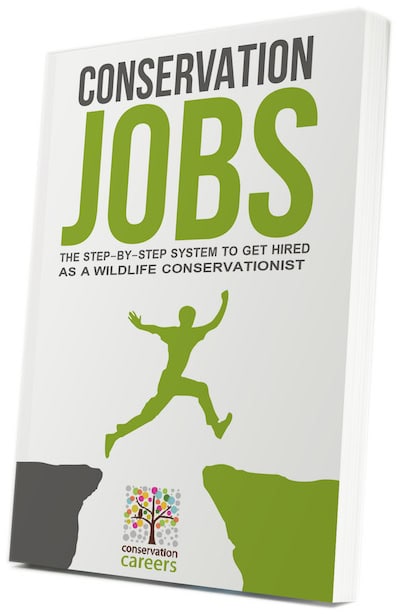 To help you navigate your options, please select which best describes you:
To help you navigate your options, please select which best describes you:- You want to work in conservation but you’re feeling lost, disillusioned or confused?!? Check out our Kick-Starter training designed to help you understand the job market, to navigate your career options, and to get hired more quickly. It’s designed for students, graduates, job-seekers and career-switchers. We’re proud to say it also has 100% satisfaction and recommendation ratings. We know you’ll love it. Find out more about our Kick-Starter – Online Course.
- You need answers to top questions about working in conservation? Check out our free Ultimate Guides covering topics like the 15 Key Conservation Job Types, Top Conservation Internships | Paid or Free and Marine Conservation Jobs, and answering questions like How to Switch Careers into Conservation, Do I need a Master’s Degree? and much more! Or download our free guides to keep and read later!
- You feel ready to be applying for jobs in conservation? Check out our membership packages for job seekers which provide access to the world’s biggest conservation job board – with over 10,000 conservation jobs shared each year – plus a range of other benefits. Check out our monthly memberships here.
- You’re submitting applications, but failing to get many interviews? Check out our FREE eBook Conservation Jobs: The Step-by-Step System to Get Hired as a Wildlife Conservationist – available on Kindle, EPUB and PDF. We can also review your applications, and provide 1:1 advice on how to improve them. Check out our application support here.
- You’ve got an interview (well done!) and would like our help to prepare for it? We know what employers want, and have helped many people prepare for and deliver successful interviews. Check out our interview preparation here.
- You’re feeling stuck, struggling with a career decision or something’s holding you back from pursuing the career of your dreams? Our 1:1 career coaching can help you gain clarity about your next steps and form a plan of action. Check out our career coaching here





